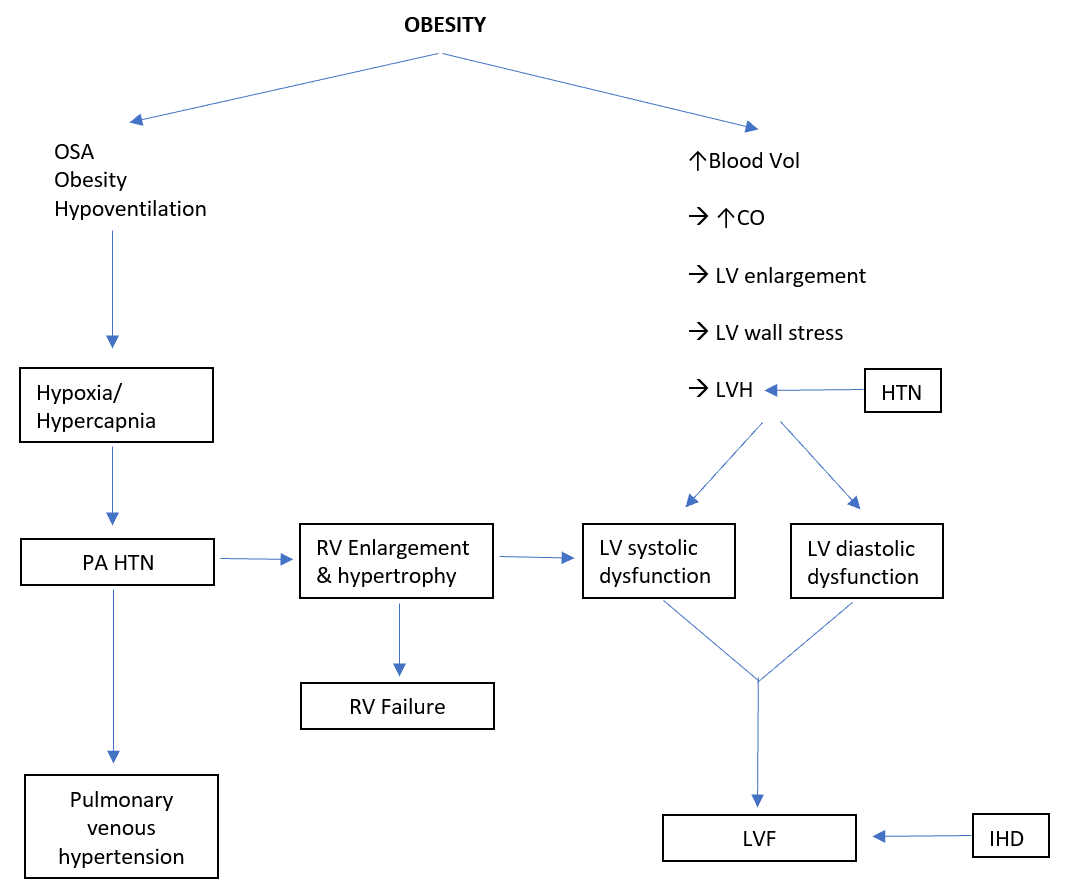G6 SYL2017 / 17A15: Outline the cardiovascular changes with morbid obesity
17A15: Exam Report
Outline the cardiovascular changes associated with morbid obesity.
42% of candidates passed this question.
Many candidates did not include enough detail in their answers.
Higher scoring answers included more depth such as the following: blood volume, left ventricular changes, arterial blood pressure, pulmonary artery pressures, risks of ischaemia, arrhythmias etc.
G6 SYL2017 / 17A15: Outline the cardiovascular changes with morbid obesity
Definitions
Obesity = condition of excess body fat
BMI > 30kg/m2
CVS Consequences
HTN
- X 10 more common
- Multifactorial
- ↑blood vol → ↑CO → ↑BP
- Hyperinsulinaemia → activates SNS → ↑Na+ reabsorption → BP
IHD
- ↑Cholesterol
- HTN
- DM
- (Above are compounding factors)
NB: obesity is an independent RF for IHD
↑ Blood Volume & CO
- Due to ↑metabolic demands of fat tissue
- Extra blood vol is distributed to the fat tissue (cerebral & renal BF unchanged)
- ↑O2 consumption & CO2 production despite ↑CO
Cardiac Arrhythmias
- Precipitation is multifactorial
- Tissue hypertrophy/dilatation
- Hypoxia
- ↓K+ from diuretics
- CAD
- ↑Catecholamines
- Fatty infiltration of conducting tissue
- Precipitation is multifactorial
Cardiac Dysfunction
- LVH
- ↑LV wall thickness & myocyte size
- Hypertrophy to compensate for ↑CO
- ↑LV size & dilatation → ↑LV wall stress as per Law of LaPlace:
- LV Systolic Dysfunction
- ↑Wall stress from LVH → contributes to systolic dysfunction
- Impaired LV Diastolic Filling & ↑LV filling pressure
- LVEDP → most specific measure for LV diastolic function
- LV hypertrophy predisposes to impaired diastolic filling & ↑pressures
- LA dilatation
- ↑LA size 2° impaired LV filling
- PA Hypertension
- OSA → ↑CO2/↓O2 → RV enlargement → RV failure
- Author: Krisoula Zahariou
